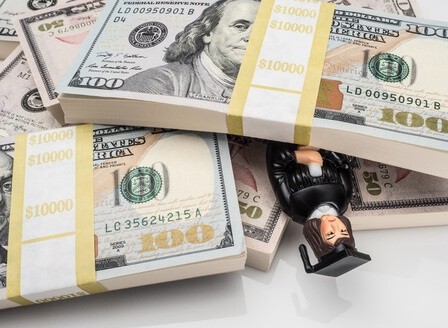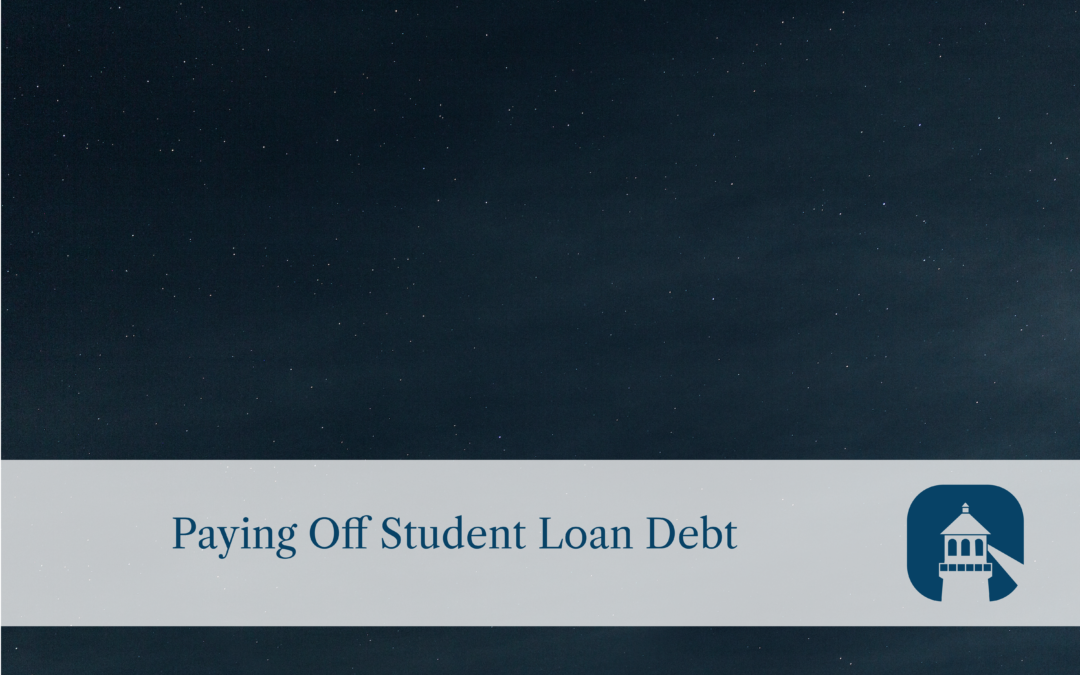If you’ve completed a degree or spent time at college, you may have taken out a loan to cover the tuition costs. If so, you’re not alone — more than half (51%) of students who earned a bachelor’s degree in 2022 graduated with an average of $29,400 in student loans.
If you’re still paying back the money you borrowed to get your degree, the monthly payments and interest may seem like a necessary evil. But that doesn’t necessarily make it any easier to fit those payments into your budget.
So, how can you pay off your student loan debt as fast as possible (without sacrificing all of your other financial goals)? Start by figuring out what type of student loan you have. Once you know that, you can make a feasible plan to pay off the balance as soon as possible.
Types of Student Loans
The term “student loans” actually encompasses several different types of school loans. When you start paying off your loan, it’s helpful to know how each type operates so you can plan accordingly.
Subsidized federal loans
These loans are some of the most common, and they possess a fixed interest rate. For loans disbursed for the 2023-2024 school year, the interest rate was 5.5% for undergraduate borrowers. However, your interest rate may be different depending on when you entered into your loan.
You must demonstrate financial need to qualify for subsidized direct loans, however, which is why many people have to accept unsubsidized federal loans. The federal government pays your interest while you are in school, so you only begin to accrue interest upon graduation.
Unsubsidized federal loans
For undergraduate borrowers, these have the same interest rate as subsidized federal loans, but they can be taken out by a student regardless of financial need. They also begin accruing interest from the day the loan is disbursed.
Direct and parent PLUS loans
Direct PLUS loans are not based on financial need, but they require students and their parents to have a clean credit history to qualify. A PLUS loan can be directly dispersed to the student or to their parents, depending on who applies. Unlike federal loans, there is no limit for how much you can take out in PLUS loans. They also start accruing interest from the day of disbursement.
Consolidation loans
These loans are essentially just “bundled” federal loans, making it easier to have everything under one payment. A fixed, average interest rate is calculated, and the consolidated loan will accrue interest at that decided rate. Depending on the federal loans consolidated, you may also have accrued interest throughout school.
How the Type of Loan Affects Your Repayment
As you can see from the above descriptions, not all student loans are made equal. Many of them are unsubsidized — which means they accrue interest while you’re in school and continue to do so after you graduate. Why does that matter? Because the longer you’re paying interest, the more you’ll have to pay over the life of the loan.
For example, if you take out a subsidized loan of $5,000 each year of your four-year undergraduate degree. You graduate with a total of $20,000 of debt, and interest starts accruing. If you take 10 years to pay off your loan, you’ll end up paying $6,046.31 in interest.
However, if you take out an unsubsidized loan, the interest starts accruing on day one. Let’s say you take out $5,000 for that first year of tuition. By the end of the year, you will have accrued $275 in interest. If you then take out $5,000 the next year, you’ll be charged interest on the whole amount of the loan, which is now $10,275. So by the end of year two, you’ll have accrued $565.13 in interest.

Clearly, the amount of debt you graduate with can vary significantly depending on whether your loan was subsidized or not. Understanding the type of loan you have can help you figure out how to pay it off. Remember, your payments get split up — part of each one goes to interest and part goes to the principal. If you can put more money toward the principal each month, you’ll pay off the balance faster.
The Principal Balance vs. the Interest
On your student loan statement, you should have a breakdown of your specific payment. The document should cover your loan account details, such as total balance, payment amount, payment due date, etc.
But there should also be a longer section showing billing details and a snapshot of your loan. Find line items like “Original Principal Amount” or “Outstanding Principal Balance” to see what your actual loan amount has been paid down to.
For example, let’s say you have a subsidized loan of $20,000 and have been making payments of $217.05 each month for two years since you graduated. For each payment, approximately $130 of it goes toward the principal, and approximately $85 goes toward the interest. (Over time, a higher percentage of each payment goes toward the principal).
After two years, your principal balance should be down to $16,826.66. You’ll have paid a total of $2,035.93 in interest so far.*
The lower the principal balance is, the less interest is charged — and the more of each payment goes toward the principal. If you pay down the principal faster, your interest accrued decreases accordingly. But how do you do that?
* Calculated using bankrate.com‘s amortization calculator
How to Pay Down Your Principal to Save Money
There are a few ways to pay down the principal on your student loans. Depending on the type of loan you possess, you may be able to simply make additional payments to the total balance online or via check. In other instances, you may need to call your lender and ask to pay down the principal balance with a lump sum separate from your minimum payments.

In general, though, the best way to pay down that principal and beat the interest is to simply pay more than your minimum balance. Make sure that you indicate that you want the extra amount you pay each month to be applied directly to the principal.
The longer you have a loan, the more the lender makes on interest. So it’s in their best interests to keep your minimum payment low. But it’s not necessarily in YOUR best interest.
So take a look at your budget and ask yourself: Is there anywhere I can cut back each month so I can channel more money toward my student loans? If the answer is no, that’s OK! Set a reminder to check back in a couple of months or next year.
If the answer is yes, all you need to do is set up a higher minimum payment on your autopay, or write a slightly larger check each month. And, no matter what you do, don’t skip a payment! Even if you pay ahead or pay more, you will accrue fees and more interest if you skip a regularly scheduled payment.
Committing to Your Goals
Higher education is expensive, and for many students and parents, saving enough cash to cover all the costs just isn’t feasible. Student loans can help cover the difference, and choosing to take out a loan for college isn’t a sign that you did something wrong.

If you do have student debt, it’s crucial to understand how your loans workand why it seems to take a long time to get the balance down. Remember, paying more than the minimum balance reduces your debt faster. And that means more money you can set aside in the future for things like travel, houses, kids, and retirement.
But what if you’re struggling to create a budget that helps you pay down your student loans? Or what if you’re just not confident you know how much extra you can pay without compromising your other goals? That’s where we can help!
A Guiding Wealth financial planner can help you make a comprehensive plan that balances your debt repayment plans with the rest of your goals. We’ll help you identify your financial priorities and work with you to create a budget and long-term plan to meet them. And we’ll do it all with encouragement, not judgment. Are you ready to get started? Schedule a consultation.


